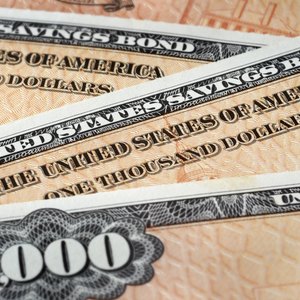
A bond works in much the same way as a loan. The borrower, which can be either a government agency or a corporate entity, issues a bond. Municipal bonds and treasury bonds are examples of bonds that are issued by government agencies.
The bond buyer serves as a lender, allowing the bond issuer to use the funds from the bond purchase in return for a later aggregate repayment that includes interest earned. Most bondholders buy their bonds for a different price than the face value, so the expected return on a bond will vary with the purchase price.
Bonds aren’t publicly traded or offered on the stock market. They must be purchased through a brokerage.
Tips
You'll need the bond's par value as well as its purchase price to calculate the expected return on bonds,
Par Value and Bond Maturity
The par value of the bond is its face value. Most corporate bonds have a par value of $1,000. The bond purchaser is entitled to $1,000 when the bond reaches maturity.
The maturity date is the date when the bond expires. It’s the date when the bond issuer must repay the bond buyer. For example, Fictional Fashion, Inc., might issue short-term bonds with a par value of $1,000 and a maturity date as soon as January 1, 2025.
Bond Markets and Bond Pricing
Bonds are worth their par value when the issuer first releases them, but these bonds can also go on sale in a secondary market known as a bond market. Remember that investors buy bonds from brokers, rather than the issuer. The secondary buyer may either sell the bond back in the bond market for a profit or wait until the bond matures. Prices in the bond market can fluctuate due to interest rate changes and rate hikes, fluctuations in the bond issuer's credit rating or shifts in the general economy.
Calculating the Expected Return
The expected return on a bond can be expressed with this formula:
RETe = (F-P)/P
RETe is the expected rate of return. F is the bond's face (or par) value, and P is the bond's purchase price.
The larger the difference between the face value and the purchase price, the higher the expected rate of total return. Generic Investments might purchase a $1,000 bond issued by Fictional Fashion for $900 in the bond market. The expected return on the Fictional Fashion bond is:
(1000-900)/900 = 100/900 = 0.1111 = 11.11 percentage points
Pretend Partners of New York purchases a $1,000 Fictional Fashion bond for $800 as the bond markets fluctuate. The expected return for Pretend Partners is:
(1000-800)/800 = 200/800 = 0.25 = 25 percentage points
Uses for Expected Return
Bond investors can use the expected return on new bonds to determine the optimal amount they can expect to receive on a bond. In some cases, such as with government bonds, the expected return gives a pretty accurate estimate of the return the investor can hope to receive.
The more reliable the credit history of the bond issuer is, the more reliable the estimate of the expected return will be. However, high-risk bonds may not deliver on the expected return due to default or bankruptcy, liquidity risk or even cash flow issues. It can depend on the issuer.
Calculating Total Return
A variance on this calculation involves determining the total return on a bond at its time of maturity or sale. This one is something of a look-back tool to determine how your investment fared.
FINRA indicates that you should begin with the ultimate value of your bond at the time of sale or maturity and then add in your total compounded interest and coupon payments or earnings. Subtract taxes, fees and commissions from the total. Next, subtract how much you initially invested. This will tell you whether you gained or lost money over the term of the bond and how much.
Calculating Current Return of Savings Bonds
TreasuryDirect provides a handy tool on its website that you can use to calculate the current value of your Treasury bonds: savings bonds that are issued by the U.S. government, specifically the Department of the Treasury (U.S. Treasury). This is the easiest method of calculation by far because you don't have to do any math. Just enter the bond's issue date, series and denomination, then click on "calculate."
When looking at bond yield curves, you'll find that Treasury yields don't tend to match the higher yields and significant returns of corporate bonds, but they’re a safe and reliable investment. There’s virtually no default risk as there can sometimes be with high-yield bonds issued by corporations.
Consider diversification if you want both security and higher yields. You can invest in bonds of both types.
References
Writer Bio
This article was written by PocketSense staff. If you have any questions, please reach out to us on our contact us page.
